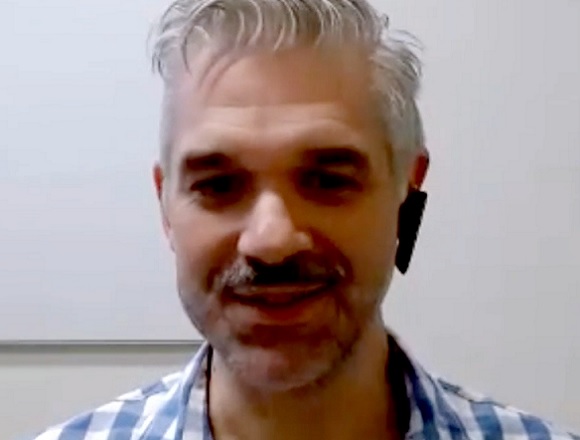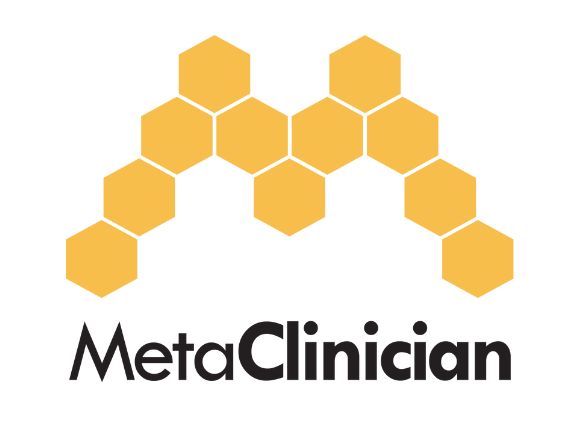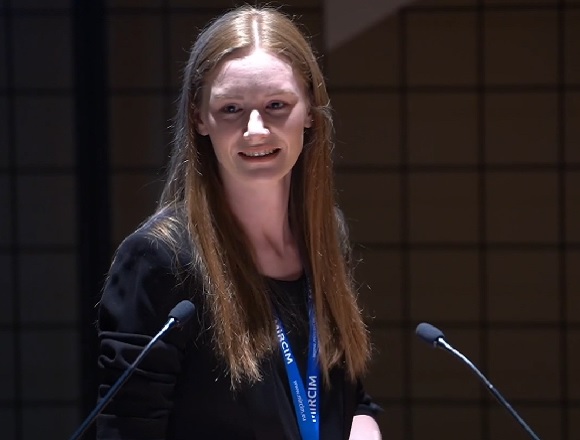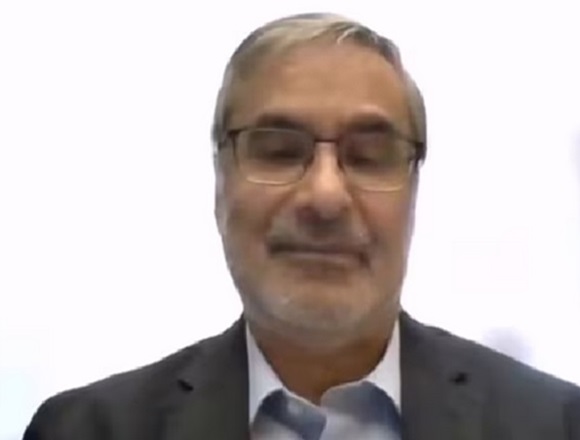Mike Sharma, MD, MSc, director of the Stroke Program at McMaster University, meets with Roman Jaeschke, MD, MSc, DPharm, to discuss the latest advancements in stroke treatment, including updated definitions, imaging techniques, and the roles of thrombolysis and clot retrieval in improving patient outcomes.
Contents
- The definition of stroke and diagnostic pathway
- Clot retrieval and thrombolysis: Candidates and time windows
- The role of imaging and perfusion mapping
- Antiplatelet agents in stroke
Transcript
Roman Jaeschke, MD, MSc, DPharm: Good morning, welcome to another edition of McMaster Perspective. I would like to introduce to you Professor Mike Sharma, who is the medical director of the Stroke Program at McMaster University and Michael G. DeGroote Chair in Stroke Prevention, so, the best person to talk about stroke. Not mentioning the fact that he is also the main author of the stroke chapter in the McMaster Textbook of Internal Medicine.
Professor Sharma, thank you very much for joining us. Maybe I will start from the question, what is stroke? What will we be talking about today?
Mike Sharma, MD, MSc: That’s a great question, Roman. And thank you for the invitation. It’s a pleasure to be with you today.
When we think about stroke, the definition has changed over what it was many decades ago. The initial definition, which was set in the 1960s, really talked about the duration of symptoms. And if you recall, there was this cutoff at 24 hours. That definition was created before we had modern imaging. So the major difference between our traditional definition and the way we use it now is that the modern definition defines a stroke, no matter the duration, if there is evidence of infarct—here I’m referring to ischemic stroke. So, ischemic stroke is defined as the presence of infarct on imaging, usually magnetic resonance imaging (MRI), but it can be computed tomography (CT) as well, and technically it also allows for pathologic identification if there’s an autopsy.
There’s one caveat to that, and that is, we recognize that some infarcts do not show up on them—they’re usually small, usually in the posterior circulation. There, we continue to accept persisting symptoms or findings in the absence of imaging, but it really requires an expert to create that diagnosis. I would say that it is more often that I say something is not a stroke in cases that look like one relying on a time-based definition than I say yes, this is genuinely stroke because of the duration of symptoms.
Roman Jaeschke: And when you say infarct, are we talking about pathologic tissue destruction?
Mike Sharma: We are, and usually now it’s defined by the imaging characteristics. So, on a CT scan you see a hypodensity that the radiologist reads as infarct, acute infarct; on MRI you see diffusion restriction, which the radiologist reads as acute infarct. All of those things really are markers of tissue destruction.
Roman Jaeschke: OK. I obviously was raised in the old definition, and in the old times a patient with a stroke was, so to speak, a simple patient. There was nothing to do. Now it obviously started to change with the first thrombolysis paper and then with clot retrieval papers, but it still generates anxiety: who, when, how fast, and so forth.
If you see a patient who clinically qualifies as a person having an acute stroke, what is your diagnostic pathway? What do you need to do fast? How do you need to think?
Mike Sharma: Really a great question. Let me help you a little bit with the anxiety, and I appreciate that this happens a lot among people who don’t do this every day. If you think it’s an acute stroke, probably the quickest thing to do is talk to somebody like one of us and say, do you think this is a candidate for acute treatment? Because even those criteria are changing.
Here’s what we do. First off, what we rely on is the recognition of an acute focal process. If somebody has developed arm weakness, visual symptoms—so, they’ve developed the hemianopia—the time of onset is very important and that’s helpful to establish. The definition of time of onset is last seen normal. That really drives everything. For instance, if you went to bed at 10:00 last night and you were fine, you wake up at 7:00 in the morning and your arm is weak, the time of onset is 10:00 last night. So, the very first thing that you’ll have to do after the clinical evaluation is obtained, is imaging, and a universal standard these days for acute stroke is a CT scan and a CT angiogram (CTA).
Now, the CT scan is critical because externally no one can distinguish an infarct, where you have some acute therapeutic options, from a hemorrhage. All we can tell is that there’s a focal deficit that localizes here. So, the CT scan separates those 2 very clearly. The CTA lets you know what type of therapeutic options you have. And because all of these responses are time limited, you really want to do those things very quickly, not to add to the anxiety, but in conditions of acute ischemia, we lose ~2 million neurons per minute of elapsed time. That’s why we push ourselves to be very fast.
The first thing I’d say, if you suspect an acute stroke and you’re not an expert at that, is make the call. One of the things that the stroke neurologists have realized is we’d rather be called 10 times unnecessarily than missed the opportunity to treat that one person. And it’s usually very straightforward with the physician who just says, I am an internist, I do this occasionally, I need your guidance on this.
Now, in terms of timelines for treatment, for thrombolysis that is 4.5 hours from the last seen normal. If you think about it, you really need to be in this treating center with everything ready probably by 4 hours to get treatment. If you’re there at 4 hours and 25 minutes, the chances that everything will go right in 5 minutes are virtually 0. For endovascular treatment, and that landscape is changing very rapidly as to who we select, the timeline is up to 24 hours from last seen well. Now, within these 24 hours there are fewer and fewer patients that are good candidates for treatment as you get further on the timeline. So, of all the people who present at 20 hours, relatively few will be good candidates for treatment. Simply put, what we’re looking for is absence of permanent damage and a treatable occlusion, and those occlusions are in the large vessels. Those ones who are candidates for endovascular treatment really have big deficits, they’re hemiplegic, they’re aphasic, they may have visual field deficits, and they’re not ones who are walking with a little bit of dysarthria. However, again, I would say, for the nonexpert: get the imaging, make the call—that really is the best way to sort these things out.
When we started doing endovascular treatment and mechanical thrombectomy, we used to be very selective and think that if the person was disabled beforehand, then maybe they’re not a good candidate for treatment based on the trials. But I must say quite clearly: if you have, let’s say, Alzheimer disease at a mild stage and you are hemiplegic, you can make a good case to treat that person, and that makes a big difference if they can walk, and talk, and feed themselves than if they can’t. So, I would say, in general our criteria have gotten broader.
Roman Jaeschke: OK, you did 2 things. You changed my definition of stroke and probably you decreased my anxiety level. Let me try to understand a little more.
It sounds that clot retrieval, endovascular clot removal, has a longer window at the moment, at least here. You obviously have to have access to it, which is not available to everybody. You mentioned, call me, but not every clinician will have it. If they don’t have access to stroke neurologists, they will not have access to clot retrieval, so that will be out of the picture. And it sounds that it’s worthwhile to do it until late in the first 24 hours even. That is number 1.
Number 2, maybe a specific question: if you are considering clot retrieval, how do you deal with thrombolysis? Do you still use it or do you send the patient for clot retrieval? Where is thrombolysis fitting here?
Mike Sharma: It’s a great question. I think that the quickest answer to it is, we use thrombolysis as if we didn’t have clot retrieval available. So, the 2 are used together. One of the issues is because clot retrieval is centralized, very often our patients are coming from another hospital. And again, if you think about what I’ve said about how many neurons a minute you lose, the earlier you get that vessel open, the better. We have a certain proportion of patients who come to Hamilton Health Sciences for clot retrieval and the vessel has already opened because they received thrombolysis at their home hospital, and that is perfectly fine with us. Then we don’t have to do the procedure, that clot has opened earlier.
The only times we will not do thrombolysis are if there’s a contraindication to it. The commonest one currently within 4.5 hours is if you are anticoagulated. So, if, for instance, you have atrial fibrillation, you’re anticoagulated with warfarin or factor X inhibitor, then thrombolysis is contraindicated. With warfarin, you can use it with an international normalized ratio (INR) of up to 1.7, but higher than that you can’t do it, so they will go directly to clot retrieval.
Some of the real enthusiasts in the clot retrieval field have said, we really don’t need thrombolysis, but for the reasons I’ve said we haven’t moved in that direction. We’ve had the experience where for technical reasons we can’t reach the clot with our catheters and you have a very sinking feeling if you think you’ve foregone the opportunity to help that person simply by not giving thrombolysis.
Roman Jaeschke: Say that you have a patient with a stroke in the Hamilton General Hospital and you can go for clot retrieval within the next 2 hours. I hear you will perform thrombolysis. One hour: you probably will give thrombolysis.
Mike Sharma: Yes.
Roman Jaeschke: Fifteen minutes. Would you still do it? Would you prefer to do it at the time of clot retrieval?
Mike Sharma: That’s a great question. Let me give you the scenario. We have the patient right here. Our team is free and the angio suite is empty.
Roman Jaeschke: Unusual.
Mike Sharma: Very unusual. So, all the stars have aligned there. There, if starting thrombolysis is going to delay the procedure, that’s one of the rare instances where we won’t. The anatomy is straightforward, so I talk to the interventionist, who says this will be quick and easy. In that case, we’ll forgo it. More commonly in that one hour what’s happening is the tissue plasminogen activator (tPa)—we now use tenecteplase (TNK), which has some advantages—is running while they’re doing the procedure. And that is perfectly fine.
Roman Jaeschke: Wow. OK. You mentioned TNK, which is tenecteplase, right? And you mentioned it has advantages. Some centers probably use tPa. Could you comment on the choice?
Mike Sharma: Yes. Between the two, we think that TNK is noninferior. The biggest advantage of TNK is, it’s given as a single bolus, so you don’t need a pump, you don’t need the nursing time, the delay to set up and program the pump and get it going. You mix it, draw it up in the syringe, and give it as a bolus over minutes, and then you’re done.
Roman Jaeschke: And it’s done. OK. Now, our discussion was prompted by a paper in the New England Journal of Medicine, I think it was from China, in which the question was about the use of thrombolysis beyond the 4.5 hours. What’s our approach to it?
Mike Sharma: Our approach and the approach at most centers is, we don’t do it. What that paper particularly addressed is patients who have criteria that otherwise would result in endovascular thrombectomy (EVT) or mechanical thrombectomy, but they can’t get it. So, what they did was they said, look, these people have an occlusion, they can’t get this mechanical thrombectomy, and we do the imaging. And the imaging that was done was more sophisticated than the simple CT, so they looked as well at perfusion, selected good candidates—and the good candidates are ones where the brain hasn’t died, is still viable but is underperfused—and that takes a little bit of experience to decide. And in those instances they did show some benefit out longer than our traditional timeline.
Now, the reason we haven’t done that is we have access to thrombolysis or to EVT, so in people who meet those criteria, we proceed to treat them with EVT and forgo the thrombolysis. I think that it may be of advantage if you’re in a situation where you don’t have access to EVT, but it does require some experience with imaging to select the best candidates.
Roman Jaeschke: On imaging—to pursue it a little longer because a lot of your audience would not have easy access to endovascular clot retrieval. What would you look at on the CT? I know, as you already mentioned, you need experience and expertise, but what would you look at? I presume clinically you look at some salvageable function still, and radiologically you look at or for what?
Mike Sharma: The best way to do it is to use CT perfusion. CT perfusion requires, in addition to unenhanced CT, an injection of contrast, and then you can map out—the software is very good at saying “this area is not yet dead but underperfused, and this area is dead.” And we have criteria that say that if the portion that we feel is irreversibly damaged—is dead—is too large, then this is going to cause problems. So, if you think about it, if you open a vessel into an area with dead tissue, the only thing that will happen is bleeding, right? You won’t bring it back. So that is the best way.
It’s not that I recommend that, but prior to using perfusion maps what we did was we used something called the Alberta Stroke Program Early CT Score (ASPECTS), which looks for early signs of ischemic damage in various areas of the brain. There’s a map and a scoring system out of 10, which lets you know how much damage there is, how big the stroke is. Now, the issue with that is unlike perfusion, where you press a button and it will give you numbers—and with some of the software even give you a recommendation as to whether the patient is a good candidate or not—that requires a lot of experience. You have to look at a lot of acute stroke scans to do it. And I must admit, to this day, in a room full of neurologists, we’re arguing about whether the correct ASPECTS is 5 or 7.
So, moving to perfusion mapping makes it much more objective, much less dependent on human experience. One thing I will say is, people sometimes are frightened about the use of perfusion mapping. We’ve done it throughout the whole region here, so smaller hospitals have that system. It makes it easier for them even to detect, to make a diagnosis of stroke, as they can look at it and it tells them if there are areas of ischemia. So there are benefits to it. It is in terms of expense not horribly expensive, but everything has a cost associated with it.
Roman Jaeschke: If I hear correctly, if you have no access to expertise and if you have no access to technology, it’s probably not smart to perform thrombolysis beyond the current window as a default.
Mike Sharma: Absolutely. And the guidelines say, please don’t do it.
Roman Jaeschke: OK. Hopefully my last question to you is, once we dealt with clot retrieval and once we’ve dealt with thrombolysis—antiplatelet treatments down the road. What’s the current wisdom here?
Mike Sharma: That’s a great question. If the patient has had thrombolysis or clot retrieval, we don’t use antiplatelets for 24 hours and we do a scan thereafter. If that’s not the case—and currently we’re acutely treating something like 25% of our patients with thrombolysis, clot retrieval, or some combination of the 2, so the majority of them don’t have a hyperacute treatment—if that’s not the case, and the CT scan shows no hemorrhage, then we’d like to get antiplatelet agents started right away. Now, the major differentiator between when you use dual antiplatelets or aspirin are 2 things. The first is time. Dual antiplatelets are best used in minor stroke or transient ischemic attack (TIA) within the first 24 hours. There are some data to suggest that you can go out to 72 hours, and the guidelines will say you might consider it up to 7 days, though I think that that’s based on not a lot of data.
Roman Jaeschke: Seven days.
Mike Sharma: I think the safest thing that I can give is to say, consider dual antiplatelets for up to 72 hours. And the difference is in how you judge how big the infarct is. We, neurologists, will use the imaging to look at and say, well, this looks large or small. Again, that takes experience. What we’ve written in the guidelines and what was done in the trials for nonexperts is the National Institutes of Health Stroke Scale (NIHSS). Dual antiplatelets are a good choice if you’re within 72 hours—best if you’re within 24 hours—and the NIHSS is ?5, so there the risk of hemorrhagic transformation is low and the benefit is there. We continue dual antiplatelets for a total of 21 days, as trials of longer duration really haven’t shown more benefit, but they do show more risk for bleeding. So, 21 days is fine and I must honestly say that the bulk of the benefit seems to be in the first 7 days. So, if I have a patient who’s having nosebleeds or is complaining about bruising, and they’re a week or 10 days later, then I will go to single antiplatelets. If you have a larger stroke or you’re outside that window, then aspirin really is the therapy of choice. Get that in quickly.
Roman Jaeschke: And dual antiplatelet would mean…?
Mike Sharma: For most people it is aspirin and clopidogrel, which decreases the risk of stroke recurrence over aspirin alone by ~25%. One of the issues with clopidogrel of course is, it needs to be metabolized to its active form, and there are certain proportion of those who do not have the enzymes that let us metabolize that drug. In Caucasians that’s maybe 20% or 30%; in East Asians it may be as high as 60%. A few trials were done replacing the clopidogrel with ticagrelor, which is widely used in cardiology, doesn’t need to be metabolized, there aren’t any genetic barriers to that. I must say, the results of those trials suggested an effect size about the same as clopidogrel, maybe a little less to our surprise, and there was an increased hazard of bleeding. So, the default right now still is clopidogrel for most of us. We will use ticagrelor if the patient has a stroke on clopidogrel or for some reason can’t tolerate or use it, knowing that with ticagrelor there is a somewhat increased risk of bleeding.
Roman Jaeschke: To summarize, in a relatively minor stroke, within 1 day, maybe 3 days, possibly 7 days, you would go with 2, of which the second would usually by default be clopidogrel on top of aspirin. If the stroke on the NIHSS is larger or more severe, and the timing is going away, you would go simply with aspirin.
Mike Sharma: Absolutely. And the candidates for that longer term probably are patients who have atherosclerosis causing the stroke. So, you see it in the carotid or intracranially. Again, that would require the imaging and that expertise—you consider it—and the guidelines will say only consider it, it’s not a strong recommendation.
Roman Jaeschke: OK. And dual antiplatelets would be given for 3 weeks, effectively.
Mike Sharma: Absolutely.
Roman Jaeschke: Professor Sharma, you decreased the level of my anxiety to a considerable degree. I’m in a fortunate place where I can always call you, so I will be less anxious about calling a stroke neurologist. And I think I understand the timing and criteria a little better and I hope that our listeners do as well. I thank you very much and I’m looking for the update of the stroke chapter in the McMaster Textbook.
Mike Sharma: Thank you very much, Roman. It’s been a pleasure.
Roman Jaeschke: It was for me as well, and I learned a lot. Thank you. Goodbye.
Mike Sharma: Goodbye.
 English
English
 Español
Español
 українська
українська









